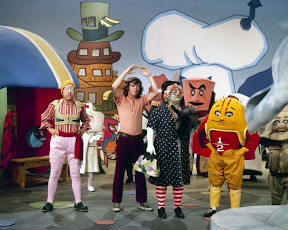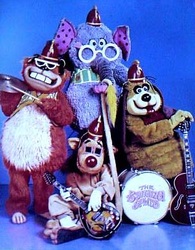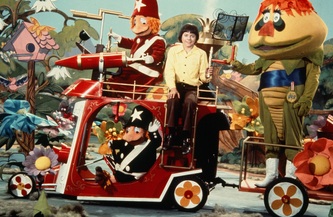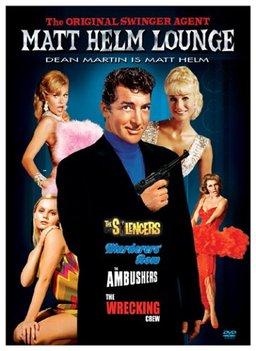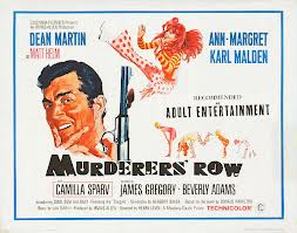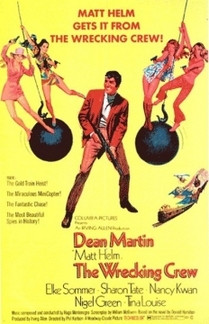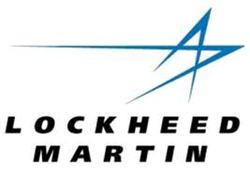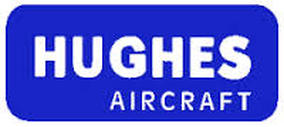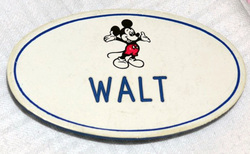
My badge from my years at Disney.
Hollywood and Beyond
In the film industry, I went to work with absolutely no drafting experience. But I soon found that the ability to draw and understand spatial relationships; and create three dimensional environments from story descriptions, meant much more than technical drafting ability. My work as a film set designer, and later, theme park show designer, was the most exciting work I’ve ever done. When you are given a script and told to make a place for the actors to play and for the story to take place, you become an integral part of a huge team of creative artists and technicians producing entertainment for people the world over; in the largest industry in the world. The following is a sampling of my adventures in Hollywood. I worked for several motion picture studios as a set designer on films such as Guess Who's Coming to Dinner, Funny Girl, Marooned, Ice Station Zebra, Tora Tora Tora, and the 007 send-ups: the Matt Helm series starring Dean Martin. Later I worked as designer, illustrator and script writer on theme park projects for Disney's EPCOT, EuroDisneyland and Disneyland, CA. I also wrote and designed for theme park production companies like Universal Studios, Warner Bros. Landmark Entertainment and Sequoia Creative Studios.
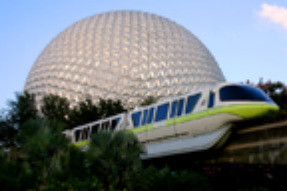
Disney
Twenty years after his death, company officials decided to go ahead with the design and building of Walt Disney’s dream: EPCOT (Experimental Prototype City of Tomorrow). I began work at an arm of the company they simply called WED (Walter Elias Disney) as a member of the "Imagineering" team that made the project a reality. My contribution was to create concept drawings, designs, illustrations and finished drawings for the hundreds of show sets, props, environments, ride vehicles and ride track layouts. I also worked with the writing team contributing ideas for the many stories that described each attraction, ride and environment in the park.
During my time as an imagineer, I contributed concept and working drawings for Space Mountain, Big Thunder Mountain and other rides at Disneyland. The biggest challenge for the imagineers was to design the ride: Spaceship Earth; a dark ride entirely inside the huge geodesic dome which has become the iconic symbol for EPCOT. We were charged with telling the story of mankind; from cave dwellers to astronauts. We right-brained artists drew the pictures, and the left-brained engineers came along and somehow made it work.
Twenty years after his death, company officials decided to go ahead with the design and building of Walt Disney’s dream: EPCOT (Experimental Prototype City of Tomorrow). I began work at an arm of the company they simply called WED (Walter Elias Disney) as a member of the "Imagineering" team that made the project a reality. My contribution was to create concept drawings, designs, illustrations and finished drawings for the hundreds of show sets, props, environments, ride vehicles and ride track layouts. I also worked with the writing team contributing ideas for the many stories that described each attraction, ride and environment in the park.
During my time as an imagineer, I contributed concept and working drawings for Space Mountain, Big Thunder Mountain and other rides at Disneyland. The biggest challenge for the imagineers was to design the ride: Spaceship Earth; a dark ride entirely inside the huge geodesic dome which has become the iconic symbol for EPCOT. We were charged with telling the story of mankind; from cave dwellers to astronauts. We right-brained artists drew the pictures, and the left-brained engineers came along and somehow made it work.
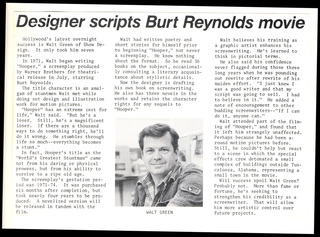
Hooper
I began work at WED Imagineering in 1977. The next year my movie, "Hooper" was released. The in-house monthly newsletter at WED ran this story about it and for a time, I was the local celebrity. The movie was a box office smash hit staring big names at the time - Burt Reynolds, Sally Field, Brian Keith and Jan Michael Vincent. And it remained among the top ten highest grossing films of all time for more than ten years after it's release.
I began work at WED Imagineering in 1977. The next year my movie, "Hooper" was released. The in-house monthly newsletter at WED ran this story about it and for a time, I was the local celebrity. The movie was a box office smash hit staring big names at the time - Burt Reynolds, Sally Field, Brian Keith and Jan Michael Vincent. And it remained among the top ten highest grossing films of all time for more than ten years after it's release.
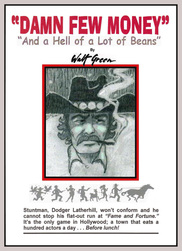
Damn Few Money
I recently publish another story about the life of a Hollywood stuntman in the form of an e-book entitled, "Damn Few Money." This particular story is a favorite of mine because the characters and adventures are based on my own life experience with the colorful people I hung out with in my Hollywood days. and sometimes called friends. The book can be purchase on any e-book site including here at amazon.com. You can click on the cover shown at right to enlarge and read the subtext.
I recently publish another story about the life of a Hollywood stuntman in the form of an e-book entitled, "Damn Few Money." This particular story is a favorite of mine because the characters and adventures are based on my own life experience with the colorful people I hung out with in my Hollywood days. and sometimes called friends. The book can be purchase on any e-book site including here at amazon.com. You can click on the cover shown at right to enlarge and read the subtext.
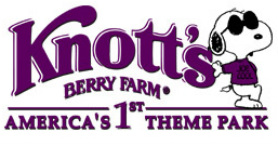
Knott's Berry Farm
During my employment at Knott’s, I worked as a consultant to assist the in-house design team in bringing new innovations to existing shows and attractions. It was at that time, that Knott's acquired licensing rights for the “Peanuts” characters. We began to re-design and make innovations to incorporate "Snoopy" and the other characters into the park. I wore out a pair of shoes walking a thousand miles around that park while I worked on intricate drawings to visually map the area so the design team and engineers could see what they had to work with in fitting in new attractions and changing out others. Many of the attractions we worked on are still in operation today.
During my employment at Knott’s, I worked as a consultant to assist the in-house design team in bringing new innovations to existing shows and attractions. It was at that time, that Knott's acquired licensing rights for the “Peanuts” characters. We began to re-design and make innovations to incorporate "Snoopy" and the other characters into the park. I wore out a pair of shoes walking a thousand miles around that park while I worked on intricate drawings to visually map the area so the design team and engineers could see what they had to work with in fitting in new attractions and changing out others. Many of the attractions we worked on are still in operation today.
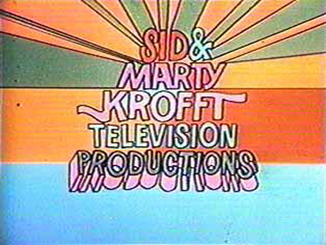
Sid and Marty Krofft Entertainment Group
I worked for Sid and Marty Krofft productions on several projects including the popular television shows; The Banana Splits, HR PuffNstuff and Lidsville. I met William Hanna and Joseph Barbera during this time. It was on-the-job training as the small team changed two dimentional drawings into three dimentional sets, costumes, and the various ride vehicles. I created designs for sets, props and costumes for H. R. Puffnstuff, Lidsville, the Banana Splits and a couple of other weekly and daily television shows for both children and adults. Later, I was chosen as the set designer for the national McDonald’s television ad campaign that introduced the concept of "McDonaldland" and several new characters, such as “The Hamburgler.” That campaign announced the greater expansion of the restaurant’s globe-circling empire.
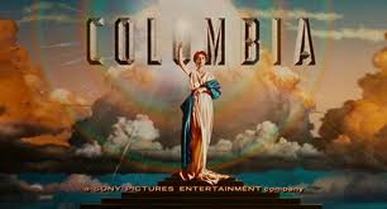
Columbia Pictures
My first introduction to actual movie making was when, through the recommendation of a friend, I was hired as a journeyman set designer at Columbia Pictures. At first I was worried that, having had no drafting experience, I would not be able to do the job. But I soon learned that set designing was a kind of drawing that I was perfectly suited for; it required seventy-five percent drawing ability and only twenty-five percent drafting and math. I was lucky to land at such a place at such a time, when movie making was exploring new capabilities of creating visual interest and impact and set designing was all "real" and not computerized. We got to think up ways to take the words on paper, draw two-dimensional images, make them into three dimensional sets to shoot live action, so those images could be projected onto two dimensional screens to tell the story.
My first introduction to actual movie making was when, through the recommendation of a friend, I was hired as a journeyman set designer at Columbia Pictures. At first I was worried that, having had no drafting experience, I would not be able to do the job. But I soon learned that set designing was a kind of drawing that I was perfectly suited for; it required seventy-five percent drawing ability and only twenty-five percent drafting and math. I was lucky to land at such a place at such a time, when movie making was exploring new capabilities of creating visual interest and impact and set designing was all "real" and not computerized. We got to think up ways to take the words on paper, draw two-dimensional images, make them into three dimensional sets to shoot live action, so those images could be projected onto two dimensional screens to tell the story.
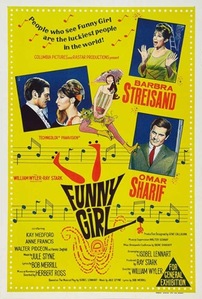
Funny Girl
While working on Funny Girl, I said, "hello," to Barbra Streisand one day. She took her first look at the dilapidated old structures at Columbia and told the studio official she was with: “Boy, this place is a real dump!” The very next day, I noticed a crew starting the work of repainting the entire exterior of the studio offices and production area. The only thing I remember about working on this picture is some designs I did for the interior of a shop, which turned out on the sets and in the film exactly as I had drawn them.
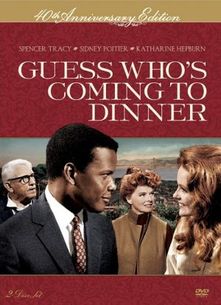
Guess Who's Coming To Dinner
While working on Guess Who’s Coming to Dinner, I met Katherine Hepburn. She talked easily to the crew and I found her to be a classy lady. Spencer Tracy was able to finish the picture, but died only a few weeks later. I was working on this picture with Robert Clatworhty, a terrific artist and art director who was nominated for his work on this film and several other's for Best Art Direction. I remember how we did a huge backdrop painting to look like the Bay Bridge over the San Francisco Bay as the view off the terrace of the family home where the scenes took place. We punched tiny holes in the backdrop and placed crew members behind it scanning flashlights from side to side to simulate cars moving across the bridge. The effect looked terrific in the film.
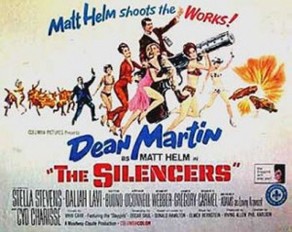
Matt Helm Films
One of the most exciting and memorable film series I worked on as a set designer, was the one starring Dean Martin as Matt Helm. The actresses were all beautiful and Dean Martin was a delight. He could easily have been 007 himself; and not just the star of the send-up look-alike, Matt Helm. We had to design the interiors for some caves where the evil villains lived. Carl Malden was one of the villains. We also had to design a huge jungle that was built on the sound stage. They brought in tons of dirt and plants and built it up about 35 feet high. They shot Dean Martin running through it. We also built sets to match footage shot at the Dos Equis XX beer bottling plant. The set was shot side by side with a process screen showing actual footage of workers at the plant in Mexico beside a fight scene in a giant vat of beer. We also designed a giant beer bottle held by a giant hand that poured beer. Fun stuff, even though you could see the slapstick jokes coming a mile away. I always watch these pictures whenever they're on TV. They were fun to make and they're even funnier to watch. Pure entertainment. When you can put your feet up and have lots of fun along with the actors.
One of the most exciting and memorable film series I worked on as a set designer, was the one starring Dean Martin as Matt Helm. The actresses were all beautiful and Dean Martin was a delight. He could easily have been 007 himself; and not just the star of the send-up look-alike, Matt Helm. We had to design the interiors for some caves where the evil villains lived. Carl Malden was one of the villains. We also had to design a huge jungle that was built on the sound stage. They brought in tons of dirt and plants and built it up about 35 feet high. They shot Dean Martin running through it. We also built sets to match footage shot at the Dos Equis XX beer bottling plant. The set was shot side by side with a process screen showing actual footage of workers at the plant in Mexico beside a fight scene in a giant vat of beer. We also designed a giant beer bottle held by a giant hand that poured beer. Fun stuff, even though you could see the slapstick jokes coming a mile away. I always watch these pictures whenever they're on TV. They were fun to make and they're even funnier to watch. Pure entertainment. When you can put your feet up and have lots of fun along with the actors.
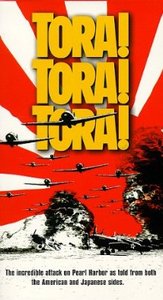
Tora! Tora! Tora!
I was actually working at Columbia Pictures when they pulled me and a couple of other guys off of one film project and sent us "on loan" to the Twentieth Century lot to work on Tora! Tora! Tora! There was a problem about the Japanese director being ill and unable to work. I'm not exactly sure why they needed us to sit there. I don't remember doing much on this film, but we had some good long lunches; A time-honored tradition in the Hollywood film industry.
I was actually working at Columbia Pictures when they pulled me and a couple of other guys off of one film project and sent us "on loan" to the Twentieth Century lot to work on Tora! Tora! Tora! There was a problem about the Japanese director being ill and unable to work. I'm not exactly sure why they needed us to sit there. I don't remember doing much on this film, but we had some good long lunches; A time-honored tradition in the Hollywood film industry.
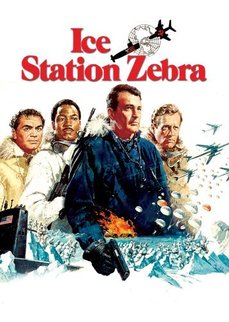
Ice Station Zebra
It was very interesting to see the intricate models of the airplanes they used for this film. The models were about four feet long and they filmed them with lights and did process shots to animate the planes attacking the soldiers at the ice station. I remember doing some work on the interior of the sets made to look like abandoned cabins where there had been an attack and the soldiers found dead bodies. I also worked on many of the gadgets and props used in the film. The whole thing was filmed on sound stages with real ice only in stock footage. This cold- war encounter was a popular film made from a popular novel.
It was very interesting to see the intricate models of the airplanes they used for this film. The models were about four feet long and they filmed them with lights and did process shots to animate the planes attacking the soldiers at the ice station. I remember doing some work on the interior of the sets made to look like abandoned cabins where there had been an attack and the soldiers found dead bodies. I also worked on many of the gadgets and props used in the film. The whole thing was filmed on sound stages with real ice only in stock footage. This cold- war encounter was a popular film made from a popular novel.
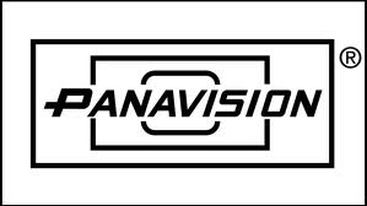
Panavision
While at Panavision, I created technical illustrations of the inner workings of their motion picture cameras. I worked with the camera
technicians who took the cameras apart so that I could draw each screw, nut, bolt and part. Then I made exploded views of every piece for the eventual creation of an operations manual. It wasn't the most exciting work I've ever done but it had it's own challenges and rewards.
While at Panavision, I created technical illustrations of the inner workings of their motion picture cameras. I worked with the camera
technicians who took the cameras apart so that I could draw each screw, nut, bolt and part. Then I made exploded views of every piece for the eventual creation of an operations manual. It wasn't the most exciting work I've ever done but it had it's own challenges and rewards.
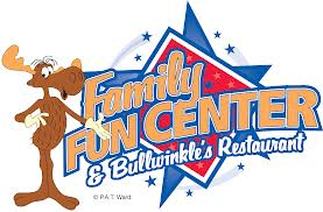
Bullwinkle and Chucky Cheese
After leaving Disney and before going to work at Universal, I was part of the team that created designs for both The Bullwinkle and Chucky Cheese restaurants. Using the characters of Rocky and Bullwinkle, we designed a raised stage environment where animatronic characters performed for the patrons of the establishment. The Chucky Cheese restaurants were designed to cater to children and the Bullwinkle franchises, more to adults.
After leaving Disney and before going to work at Universal, I was part of the team that created designs for both The Bullwinkle and Chucky Cheese restaurants. Using the characters of Rocky and Bullwinkle, we designed a raised stage environment where animatronic characters performed for the patrons of the establishment. The Chucky Cheese restaurants were designed to cater to children and the Bullwinkle franchises, more to adults.
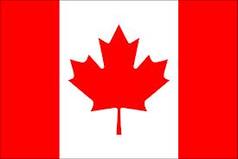
Channel 8, Vancouver BC, Canada
As Art Director for Channel 8: the first independent television station to broadcast in Canada, I helped create short animation films and promotional art and illustrations. I designed sets and props for the ongoing in-studio shows. While there, I co-wrote and co-produced a couple of the shows that featured stories about local colorful characters, and one weekly show called Tides and Trails; about hunting and fishing; in the beautiful outdoors of British Columbia.
As Art Director for Channel 8: the first independent television station to broadcast in Canada, I helped create short animation films and promotional art and illustrations. I designed sets and props for the ongoing in-studio shows. While there, I co-wrote and co-produced a couple of the shows that featured stories about local colorful characters, and one weekly show called Tides and Trails; about hunting and fishing; in the beautiful outdoors of British Columbia.
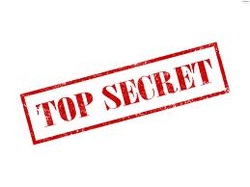
Aerospace Industry Work
During the aero-space era, as a technical illustrator; I was often called on to add the human figure where needed to show the operation of military hardware or vehicles and aircraft in action. I worked at writing and preparing military manuals. My secret clearance allowed me to work for the subcontractors whose job was to supply the manpower to large military firms such as Douglas, Hughes, and Lockheed.
During the aero-space era, as a technical illustrator; I was often called on to add the human figure where needed to show the operation of military hardware or vehicles and aircraft in action. I worked at writing and preparing military manuals. My secret clearance allowed me to work for the subcontractors whose job was to supply the manpower to large military firms such as Douglas, Hughes, and Lockheed.

